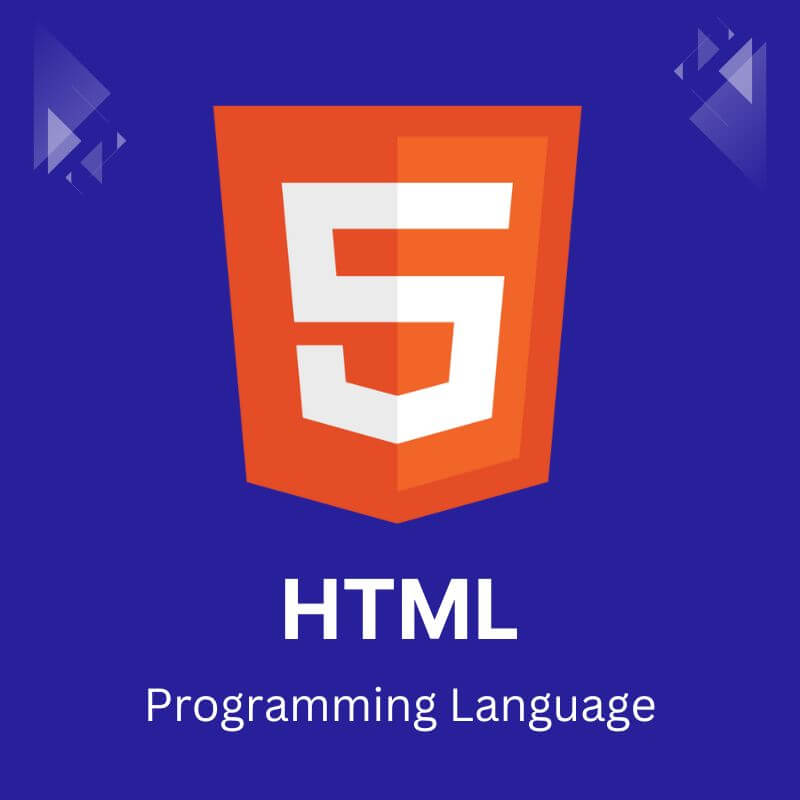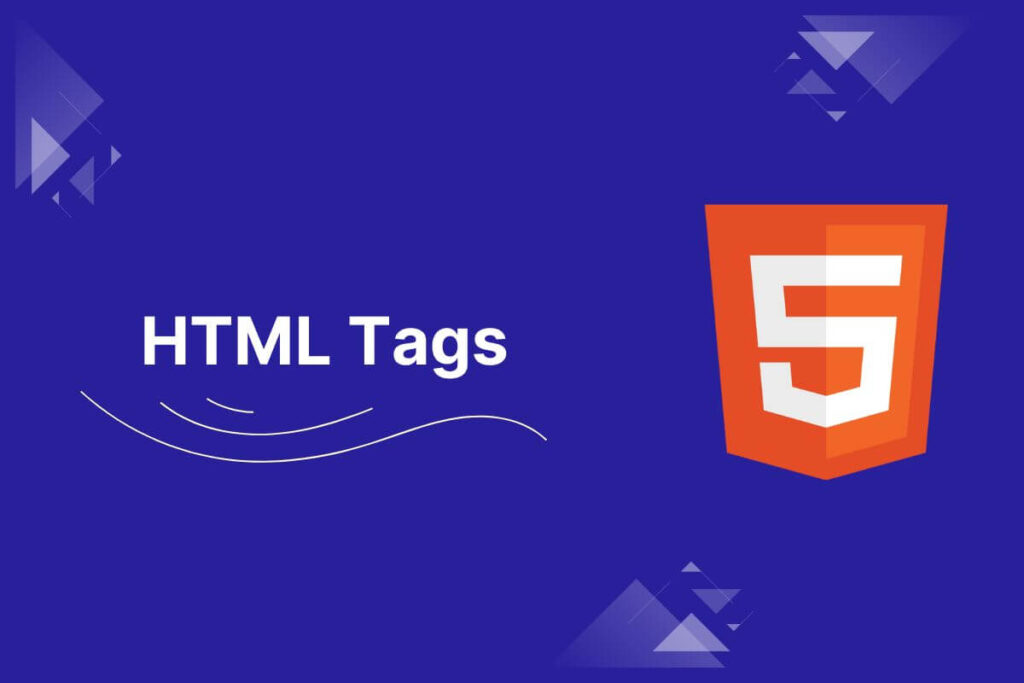In the ever-evolving digital landscape, the ability to create and structure web pages is a fundamental skill. At the heart of this process lies the HTML (Hypertext Markup Language), a powerful markup language that provides the blueprint for every website you visit.
HTML tags are the essential building blocks that define the structure, content, and layout of web pages.
These tags act as instructions, guiding web browsers on how to display text, images, links, and other elements. From the humble <p> tag that defines a paragraph to the mighty <div> tag that creates sections and containers, each tag plays a crucial role in shaping the online experience.
HTML Tags with Examples
Here are some commonly used HTML tags:
Heading Tags
Heading tags in HTML are used to define headings in a document, ranging from <h1> (the highest level) to <h6> (the lowest level).
Here’s an example of how heading tags can be used:
<!DOCTYPE html>
<html>
<head>
<title>Heading Tags Example</title>
</head>
<body>
<h1>This is a Level 1 Heading</h1>
<p>This is some content under the level 1 heading.</p>
<h2>This is a Level 2 Heading</h2>
<p>This is some content under the level 2 heading.</p>
<h3>This is a Level 3 Heading</h3>
<p>This is some content under the level 3 heading.</p>
<h4>This is a Level 4 Heading</h4>
<p>This is some content under the level 4 heading.</p>
<h5>This is a Level 5 Heading</h5>
<p>This is some content under the level 5 heading.</p>
<h6>This is a Level 6 Heading</h6>
<p>This is some content under the level 6 heading.</p>
</body>
</html>
In this example:
- Each heading tag (<h1> to <h6>) defines a heading of a different level.
- The content under each heading is represented by <p> (paragraph) tags.
Headings are used to structure the content of your HTML document, providing hierarchy and making it more readable for both users and search engines.
Paragraph Tag
The <p> (paragraph) tag in HTML is used to define paragraphs of text.
Here’s an example of how you can use the <p> tag:
<!DOCTYPE html>
<html>
<head>
<title>Paragraph Tag Example</title>
</head>
<body>
<h1>Introduction to HTML</h1>
<p>
HTML (Hypertext Markup Language) is the standard markup language for creating web pages.
It is used to describe the structure of web pages using markup tags. HTML elements are
represented by tags enclosed in angle brackets.
</p>
<h2>Basic Structure of an HTML Document</h2>
<p>
An HTML document typically consists of the following elements:
</p>
<ul>
<li><strong>DOCTYPE Declaration:</strong> Defines the document type and version of HTML.</li>
<li><strong>HTML Element:</strong> Represents the root element of an HTML document.</li>
<li><strong>Head Element:</strong> Contains meta-information about the HTML document.</li>
<li><strong>Body Element:</strong> Contains the content of the HTML document.</li>
</ul>
<p>
These elements work together to structure and present content on the web.
</p>
</body>
</html>
In this example:
- The <p> tags are used to define paragraphs of text.
- The content within each pair of <p> tags is considered a separate paragraph.
- The content can include text, images, links, or any other HTML elements.
Using <p> tags helps organize and format text content, making it more readable and accessible for both users and web browsers.
Line Break Tag
The line break tag in HTML is represented by <br>. It is a self-closing tag and is used to insert a line break or new line within text.
Here’s an example of how you can use the line break tag:
<!DOCTYPE html>
<html>
<head>
<title>Line Break Tag Example</title>
</head>
<body>
<h1>Contact Information</h1>
<p>
Name: John Doe<br>
Email: john.doe@example.com<br>
Phone: (123) 456-7890
</p>
<h2>Address</h2>
<p>
123 Main Street<br>
Cityville, State 56789<br>
Country
</p>
</body>
</html>
In this example:
- The <br> tag is used to create line breaks within the paragraphs.
- Each use of <br> creates a new line, allowing you to format the content in a way that is visually appealing and easy to read.
Keep in mind that excessive use of line breaks for spacing purposes is generally discouraged. CSS is usually used for more precise control over layout and spacing. However, the <br> tag is handy for situations where a simple line break is needed, such as in addresses or contact information.
Horizontal Line Tag
The horizontal line tag in HTML is represented by <hr>. It is a self-closing tag and is used to create a thematic break or horizontal line in the content.
Here’s an example of how you can use the horizontal line tag:
<!DOCTYPE html>
<html>
<head>
<title>Horizontal Line Example</title>
</head>
<body>
<h1>Section 1</h1>
<p>This is the content of Section 1.</p>
<hr>
<h2>Subsection 1.1</h2>
<p>This is the content of Subsection 1.1.</p>
<h2>Subsection 1.2</h2>
<p>This is the content of Subsection 1.2.</p>
<hr>
<h1>Section 2</h1>
<p>This is the content of Section 2.</p>
</body>
</html>
In this example:
- The <hr> tag is used to create horizontal lines between sections of content.
- The horizontal lines serve as visual dividers, making it easier to distinguish different sections or subsections within the document.
The <hr> tag is a simple and effective way to add visual breaks to your content. However, for more complex styling and layout control, CSS is often preferred.
Centering Content Tag
If you want a simpler example using only HTML (without CSS for centering), you can use the deprecated <center> tag. However, keep in mind that using CSS for styling and layout is the recommended practice.
Here’s a basic HTML example using the <center> tag:
<!DOCTYPE html>
<html lang="en">
<head>
<meta charset="UTF-8">
<meta name="viewport" content="width=device-width, initial-scale=1.0">
<title>Centering Content Example</title>
</head>
<body>
<center>
<h1>Centered Heading</h1>
<p>This content is centered using the <center> tag (deprecated).</p>
<img decoding="async" src="example-image.jpg" alt="Centered Image">
</center>
</body>
</html>
In this example:
- The content inside the <center> tag is centered horizontally.
Remember, the use of the <center> tag is considered deprecated in HTML5, and it’s better to use CSS for styling purposes. The previous examples provided a more modern approach using CSS for centering content.
Nonbreaking Spaces Tag
In HTML, nonbreaking spaces can be represented using the entity. This entity is useful when you want to prevent browsers from breaking spaces between words or characters.
Here’s an example:
<!DOCTYPE html>
<html lang="en">
<head>
<meta charset="UTF-8">
<meta name="viewport" content="width=device-width, initial-scale=1.0">
<title>Nonbreaking Spaces Example</title>
</head>
<body>
<h1>Nonbreaking Spaces Example</h1>
<p>This is some text with regular spaces between the words.</p>
<p>This is some text with nonbreaking spaces.</p>
</body>
</html>
In this example:
- The first paragraph contains regular spaces between words.
- The second paragraph uses between each word, preventing the browser from breaking the spaces.
When the second paragraph is rendered, you’ll see that the spaces are maintained without any line breaks. Nonbreaking spaces are particularly useful when you want to keep certain words or characters together, such as in code snippets or other instances where breaking spaces could affect the intended formatting.
Preserve Formatting Tag
To preserve formatting, especially in cases where you want to display preformatted text, you can use the <pre> (preformatted) tag in HTML. The <pre> tag preserves both spaces and line breaks within the text.
Here’s an example:
<!DOCTYPE html>
<html lang="en">
<head>
<meta charset="UTF-8">
<meta name="viewport" content="width=device-width, initial-scale=1.0">
<title>Preserve Formatting Example</title>
</head>
<body>
<h1>Preserve Formatting Example</h1>
<pre>
This is some text
with preserved
formatting.
Multiple spaces and
line breaks are maintained.
</pre>
</body>
</html>
In this example:
- The <pre> tag is used to enclose the preformatted text.
- The text within the <pre> tag is displayed exactly as it appears in the HTML source code, preserving spaces and line breaks.
The <pre> tag is commonly used for displaying code snippets, ASCII art, or any text where maintaining the original formatting is essential. It is especially helpful when you want to present text in a fixed-width font, as is often the case with code.


